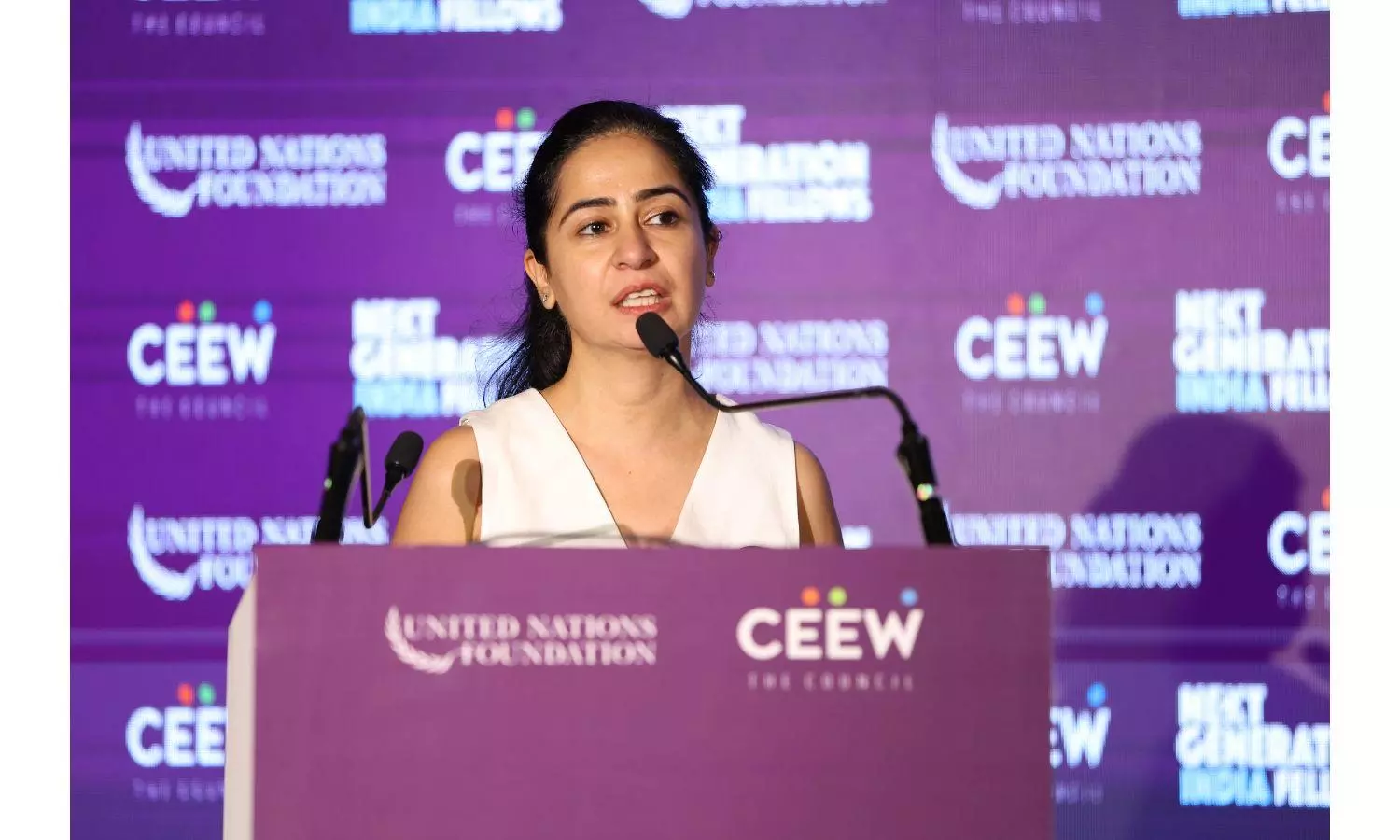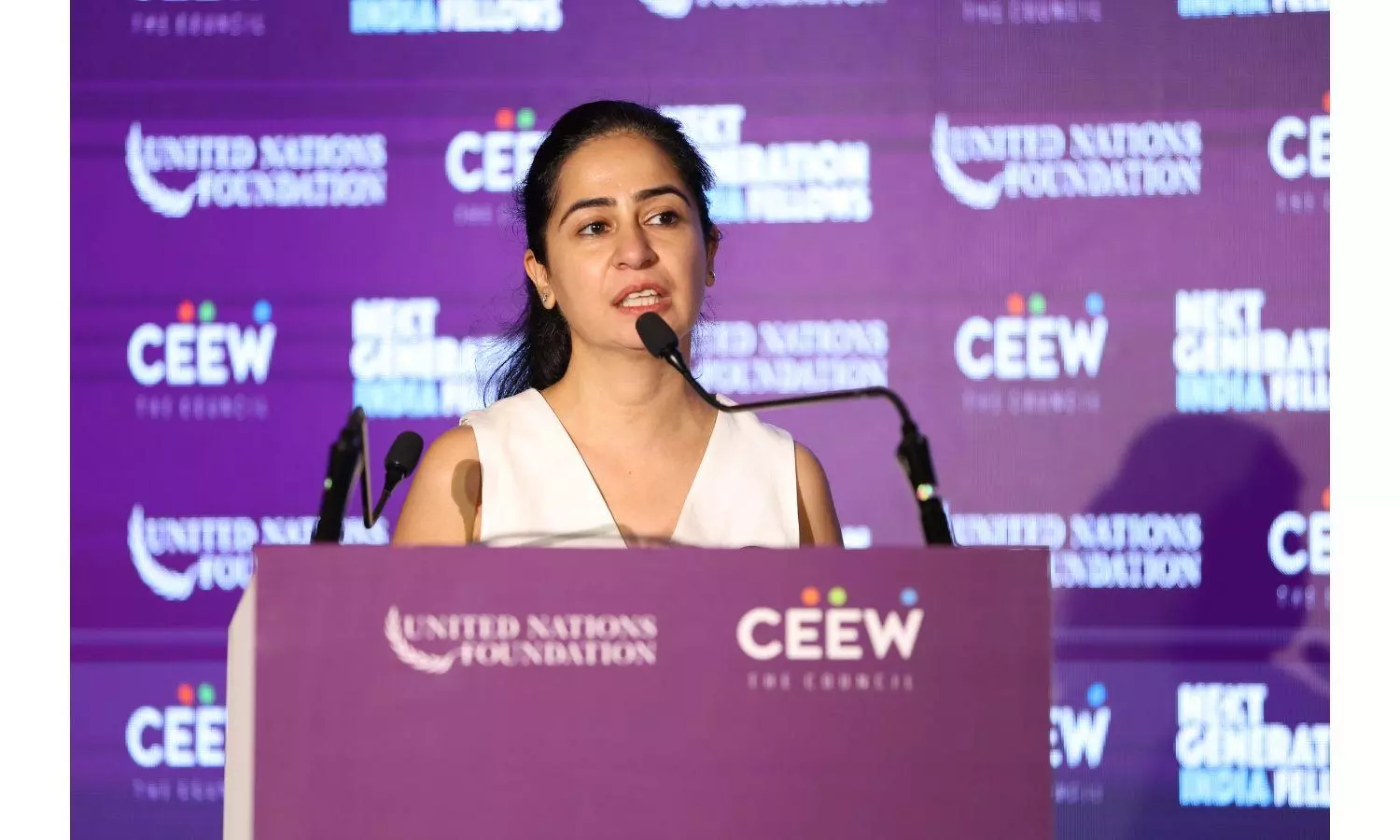
Hyderabad: Reman Singh, Director of Human Resources at the Council on Energy, Environment and Water (CEEW), shares insights on building a successful career in public policy and highlights CEEW’s innovative approaches to talent management, diversity, and sustainability. With a focus on nurturing the next generation of leaders, Reman discusses the importance of curiosity, resilience, and lifelong learning in addressing complex climate and sustainability challenges.
What advice would you give to young professionals looking to build a successful career in public policy, and how can they make a meaningful impact in this field?
Plenty of bold ideas mixed with a healthy dose of curiosity educated irreverence, patience, and resilience. Building a career in public policy in the area of climate and sustainability requires imagination to solve problems, for which a “ready model” simply does not exist, in any part of the world! Most of the developed world as it exists today, first pursued a development trajectory and then moved towards decarbonisation. Today, we do not have that luxury, and developing countries are aiming to develop and decarbonise, in the same time horizon. So, as a young professional, if you are interested in finding solutions and pathways to audacious problems such as these – you need to be strongly self-motivated and rigorous in your approach and all the while also not losing sight of the outcomes. Patience is key, as creating a policy shift or change takes time, and it may take months, or even years, to see a direct cause and effect of your effort.
How does CEEW prioritise inclusivity and diversity in the workplace, and what initiatives have been most effective in promoting a culture of belonging?
At CEEW, we have a median age of 29.8 years, and we intend to stay this way! We strongly believe in diversity of thoughts and ideas and creating an open culture where people can openly and freely express their educated opinions about any issue. We have an all-hands-on-deck Tuesday Team Meeting where all 300+ colleagues are in attendance, and there is a healthy exchange and questioning of presented constructs. We also routinely conduct gender sensitisation training, and our medical insurance covers LGBTQIA+. In recruitment, we are mindful of using gender-neutral pronouns across our job descriptions, and we consciously recruit across tier 1, tier 2, tier 3, and global hubs, as we know the best talent does not have a state or a zip code! We also track and report back on our Gender Key Performance Indicators (KPIs) such as salary disbursement by gender, the number of women leads authors, the number of opinion pieces authored by women, the proportion of women leading teams and these are reported right up to our Board of trustees, to ensure we consistently do better on this hard metrics. As a think tank, inclusivity and diversity to us, at its essence, means mutual respect and transparency being accorded to everyone who is associated with us, irrespective of any filter.
Continuous learning and development are essential for career advancement. What opportunities does CEEW provide for employees to upskill and reskill, and how do you encourage a culture of lifelong learning?
We do two things, and what makes us unique is we do them with boring consistency. One, all our colleagues go through the CEEW Academy or way of thinking to succeed at their career milestones. So, when you are just starting your career as an Analyst, your learning curriculum would involve prioritisation and planning skills, how to establish rapport across stakeholders, basics of research, and unpacking accountability. Once you are at a more advanced career level, the Academy programme would consist of honing your leadership skills, building trusted advisor relationships, moving from research to action, etc. We have been running this flagship initiative for the past 3 years, and we have found it both shapes and energises the participants, who often use the takeaways in their day-to-day roles. It is also a great way of forging peer learning and camaraderie, at each career milestone.
The second thing we invest in is curated and personalised development opportunities for our high-performing talent. This could be a Fellowship at Yale, a Dasra Leadership Programme, or a coaching programme, and these are individual opportunities selected to grow the career pathways of the nominated individuals. A third way we have invested in skilling this year is to ensure each and every colleague goes through an AI-training module, so they can start to use this thinking to drive efficiency in their roles. No surprises that, we did not need a single nudge for people to attend this timely topic training! This again also tells us that pull factors work much better than push factors when you think about upskilling and reskilling more broadly.
What are some of the most significant challenges facing the public policy sector, and how can HR professionals help address these challenges?
I am an example of cross-over talent from the corporate side, who has been with the public policy sector for about five years now, and it is only now that I can fully appreciate how different and unique the talent demands are for this sector! One, the demand for bright people in the sector far outstrips the supply. So, you need to continuously think about partnerships, networking, and connections to create a continuous pipeline of talent.
Second, whereas corporate wisdom dictates that engagement dip and turnover climbs at the 2.5 to 3 years mark is to be expected, here it truly hurts the research process, which has a much longer gestational period. Plus, the individual researcher’s skills are not easily transferable or replaceable. Therefore, talent management has to be re-imagined to allow colleagues to stay engaged and thrive for much longer periods, and ensure a trough does not come in at the 3-year mark.
Thirdly, given the nature of work, setting clear performance metrics is a must for driving the organisation’s vision and growth. HR professionals working in this industry must establish systems, frameworks, and, most importantly, behaviours so that accountability is well established across the organisation.
What strategies has CEEW implemented to attract and retain top talent in the competitive public policy space?
One of the reasons why CEEW was established was to build careers in public policy. The fulfillment of this promise has been one of the chief reasons why we have been successful in attracting and retaining top talent in a competitive space. Also, amazing talent begets amazing talent and our senior leadership team, led by our Founder-CEO, Dr Arunabha Ghosh, are our biggest talent magnets for prospective colleagues to work and grow their careers with us.
How does CEEW measure the success of its HR initiatives, and what metrics do you use to evaluate the impact on organisational performance?
The same mantra of AMR – Attract, Motivate, and Retain talent is the benchmark we use to measure the success of our HR initiatives! We measure the turnaround time of recruitment as well as the success of the new joiners at the 6-month mark, to gauge whether we are bringing in the right talent at CEEW. We also track our regretted attrition rate and report this regularly to our Board of Trustees. We also take exit interactions seriously to understand the root causes, and take course correction actions, and enhance our experience as an employer.
As HR, our role is that of a custodian and a facilitator, and we recognise that managers are the de facto HR for their teams (whether they realise it or not!), as they impact their OKRs, feedback conversations, career, and compensation. Therefore, we are also investing in building managerial effectiveness skills, for all managers – first-time managers or experienced Team Leads, so that they know how to go about creating highly engaged and high-performing teams.
What role does technology play in supporting HR functions at CEEW, and how do you leverage data and analytics to inform HR decision-making?
We have used technology as an enabler to manage employee records, day-to-day operations, and performance management for the past decade. AI now brings the opportunity for us to leapfrog in new ways. We are now in the process of amalgamating AI into some of our HR functions, so we have better dashboards and real-time data to inform decision-making. An interesting interface is also being developed internally to service employee requests and queries. We also see a large role that AI will play in predictive recruitment, going forward, which will lead to a much better fitment and alignment between candidates and prospective employers, saving time and improving workplace outcomes significantly.
How does CEEW’s commitment to sustainability and environmental stewardship influence its HR practices and policies?
It is the lens with which we look at everything – big or small! For example – on Day 1 at CEEW, a new joiner will receive a nutritious and sustainable snack bar that has been chosen by our Sustainable Foods System team with a nudge to “Snack with Purpose”. Once a colleague has completed three years or five years of tenure at CEEW, as part of the recognition of tenure programme, one of the ways in which they will be felicitated is by planting the equivalent number of trees in that individual’s name, in a State in India, in collaboration with Grow-trees. At any of our anniversary or festival celebrations, our administrative team always ensures that reusable plates are being used – and there is zero disposable or plastic ware being used. These are some small examples in which our commitment to sustainability influences various aspects of our work environment, and we are continuously looking to ‘raise the bar’ on this one!
